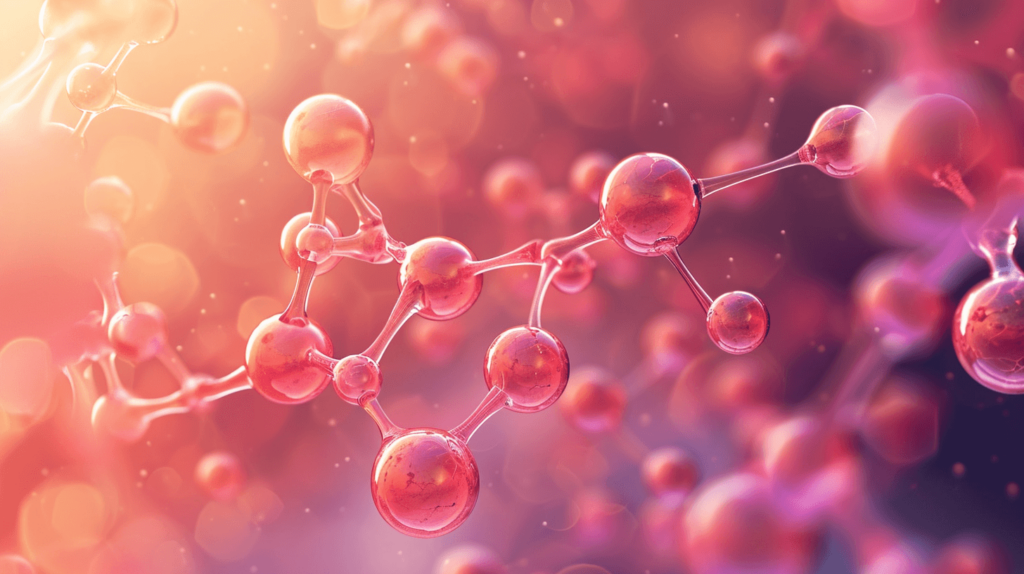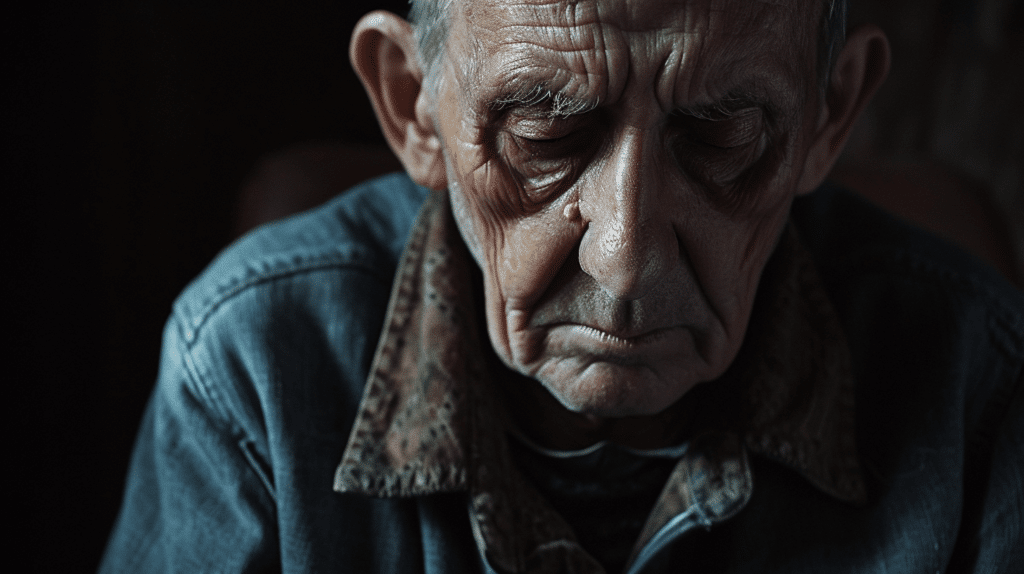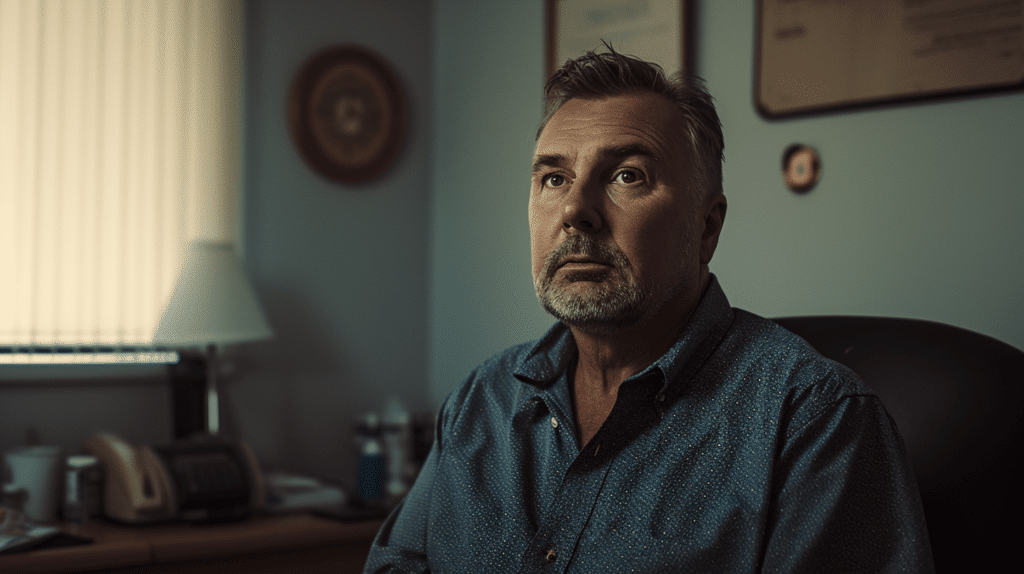How do you address low testosterone? This article offers straightforward guidance on treating low testosterone through both medical therapies and lifestyle adjustments. Anticipate a straightforward, no-nonsense outline of TRT, enclomiphene, dietary improvements, and more.
Key Takeaways
- Low testosterone, or male hypogonadism, is a condition marked by insufficient production of testosterone, leading to symptoms like decreased libido, erectile dysfunction, mood disorders, and reduced bone density.
- Diagnosing low testosterone involves a consultation with a healthcare provider and blood tests, often with follow-ups and adjustments in treatment to ensure hormone balance and minimize potential risks.
- Treatment options for low testosterone include Testosterone Replacement Therapy (TRT), enclomiphene, and lifestyle changes like exercise, healthy diet, and stress management.
Understanding Low Testosterone

Testosterone, the primary male hormone, is pivotal in shaping men’s health. It regulates:
- Sexual desire
- Bone density
- Fat distribution
- Muscle mass and strength
- Production of red blood cells and sperm
The production of testosterone involves a complex process. Signals from the brain trigger the pituitary gland to relay signals to the testes, initiating testosterone and sperm production. This process also involves releasing follicle-stimulating hormone (FSH) and luteinizing hormone (LH).
When the body fails to produce sufficient amounts of this hormone, it leads to a condition known as low testosterone, also known as testosterone deficiency or male hypogonadism.
Men’s testosterone levels typically fall within a healthy range of 300 to 1,000 ng/dL. We recommend consulting a healthcare professional to order a blood test and for individual test result interpretation. Testosterone levels that fall below or on the low end of this range may suggest testosterone deficiency. Factors contributing to decreased testosterone levels in men may involve:
- Aging
- Hormone fluctuations
- Obesity
- Specific medical conditions
- Stress
- Issues with the pituitary gland or testicles
- The use of certain medications
Symptoms of low testosterone

Low testosterone can manifest in a variety of symptoms, including:
- Diminished sex drive
- Erectile dysfunction
- Reduced morning and nocturnal erections
- Delayed ejaculation
- Decreased semen volume
- Mood disorders, such as depression
- Decreased energy
- Diminished cognitive abilities that often manifest as mental fog.
Physically, it can lead to elevated body fat and decreased energy levels. It can also negatively impact bone health by reducing bone mineral density and increasing bone fracture susceptibility.
Diagnosing Low Testosterone
Diagnosing low testosterone involves a consultation with a healthcare provider who checks for low T symptoms, evaluates metabolic syndrome, and reviews the results of your blood tests. The blood tests involve specific blood panels, namely the total testosterone, CBC, PSA, and estradiol tests.
Your healthcare provider will also asses your family history of diseases linked to low testosterone, a history of stroke or heart attack, and a history of unexplained anemia.
Treatments for Low Testosterone
Testosterone Replacement Therapy (TRT)

For those diagnosed with low testosterone, Testosterone Replacement Therapy (TRT) can serve as a lifeline to restore hormone levels and vitality. TRT, a form of hormone therapy, offers various options, including:
- Injections
- Patches and Gels
- Pellets
- Oral medications
Each option has its unique benefits and potential side effects. Patients select which version of TRT is right for them based on a range of factors such as the individual’s objectives, preferences, concurrent health conditions, risk factors, age, lifestyle, dietary habits, symptoms, actual hormone levels, and other individual health factors.
Testosterone Injections
Testosterone injections are a standard method of testosterone therapy, providing a direct and controlled dose of the hormone. The available types of testosterone injections include testosterone cypionate, testosterone enanthate, and testosterone propionate, but testosterone cypionate is often the preferred choice for testosterone replacement therapy (TRT) for numerous reasons:
- It has a longer half-life compared to other forms of testosterone, which allows for less frequent dosing, making it more convenient for patients, as it typically requires only once-a-week injections.
- Testosterone cypionate is oil-soluble, allowing for slow release into the bloodstream and resulting in a more stable testosterone level between doses, which provides more consistent benefits and fewer side effects.
- Testosterone cypionate is extensively studied, and its safety and efficacy are well-established, which gives healthcare providers confidence in its use for treating low testosterone.
Patients typically administer these injections via intramuscular shots, commonly in the thigh or hip. Testosterone injections are generally administered every 7 to 10 days to achieve maximum effectiveness.
Patches and gels
Patches and gels offer a non-invasive option for testosterone therapy. They are an excellent option for those who are averse to needles. When using patches and gels, testosterone absorbs into the stratum corneum, which acts as a reservoir. This reservoir gradually releases testosterone into the bloodstream over several hours, leading to consistent serum levels of the hormone.
While patches and gels can be a good option, we recognize that testosterone injections are often considered superior for a few reasons:
- More efficient absorption: Testosterone injections are delivered directly into the muscle, bypassing the skin and fat layers. This process allows for more efficient absorption of the hormone into the bloodstream.
- Controlled dosing: Injections allow for a more precise and controlled dose of testosterone, ensuring that the body receives the exact amount it needs.
- Less daily maintenance: Unlike patches and gels, which often require daily application, testosterone injections are typically administered once a week or once every two weeks. This schedule can be more convenient for many patients.
- Reduced skin reactions: Some men may experience skin irritation or allergic reactions to the adhesive used in patches or the ingredients in gels. Injections eliminate this risk.
- Cost-effective: In general, testosterone injections tend to be more cost-effective than patches and gels.
Testosterone Pellets
Testosterone pellets represent another method of testosterone replacement therapy. These are small, cylindrical pellets typically inserted subcutaneously by a healthcare provider in the office. The pellets slowly release testosterone over 3 to 6 months, providing a steady, consistent hormone delivery.
The benefits of testosterone pellets include:
- A steady release of testosterone helps avoid the peaks and troughs associated with injections.
- It is convenient for patients as it requires less frequent administration than injections.
- Pellets prevent the potential skin reactions associated with patches or gels.
However, testosterone pellets also have their drawbacks:
- They require a minor surgical procedure for insertion and potential removal.
- There’s a risk of pellet extrusion or infection at the insertion site.
- Dose adjustments are not as flexible as with injections.
Oral medications
Oral medications provide an alternative to injections and topical treatments. The available types of oral medications for low testosterone treatment encompass fluoxymesterone, JATENZO (oral testosterone undecanoate), and testosterone undecanoate capsules. These medications function by providing exogenous testosterone to compensate for the decreased natural production of testosterone in the body.
However, compared to testosterone injections, oral medications may be less effective. Testosterone injections are delivered directly into the muscle, bypassing the skin and fat layers, allowing more efficient hormone absorption into the bloodstream. Injections also allow for a more precise and controlled dose of testosterone, ensuring that the body receives the exact amount it needs.
Furthermore, unlike oral medications that require daily intake, testosterone injections are typically administered once a week or once every two weeks, making them more convenient for many patients. Testosterone injections are also generally more cost-effective than oral medications.
Enclomiphene
For those who prefer to boost their natural testosterone production, there is the option of using medications such as Enclomiphene. Enclomiphene is another oral medication, but we classify this treatment differently. Unlike other oral medications and even testosterone injections that provide exogenous testosterone, enclomiphene stimulates the body’s natural testosterone production. It acts as an antagonist on the hypothalamic-pituitary axis, provoking GnRH secretion and ultimately stimulating testosterone production within the body.
While Testosterone Replacement Therapy (TRT) is a popular and effective treatment for low testosterone, it carries a potential risk of infertility because exogenous testosterone provided through injections can suppress the natural production of testosterone and sperm in the testes, leading to potential fertility issues.
Since enclomiphene stimulates the body’s production of testosterone, enclomiphene can boost testosterone levels while preserving fertility, making it an attractive alternative for men who wish to maintain their reproductive potential while managing low testosterone.
Lifestyle Changes to Boost Testosterone Levels Naturally
Besides medical treatments, several lifestyle changes can help improve testosterone levels naturally. These changes include regular exercise, a healthy diet, and stress management.
These lifestyle changes can offer a natural and sustainable way to enhance testosterone levels and improve overall health.
Exercise

Exercise plays a significant role in enhancing testosterone levels. Regular physical activity, especially resistance exercise, can lead to immediate fluctuations in serum testosterone concentrations and elevate testosterone levels. Healthcare professionals recommend resistance training and high-intensity interval training to enhance testosterone levels.
Additional benefits of strength-training workouts include:
- Increased muscle mass
- Improved bone density
- Enhanced metabolism
Weight Loss and Testosterone Levels
Obesity is one of the risk factors associated with low testosterone levels. Excessive body fat can affect hormone production and metabolism, including testosterone production. Therefore, losing weight, especially through regular physical activity and a balanced diet, can positively impact testosterone levels.
This process of losing weight and increasing testosterone levels relates to the role of adipose tissue, or fat cells, which are known to convert testosterone into estrogen, the primary female hormone. More body fat converts more testosterone into estrogen, decreasing overall testosterone levels. Therefore, by reducing the amount of body fat through weight loss, less testosterone is converted into estrogen, resulting in higher testosterone levels.
Healthy diet
A healthy diet is another natural way to boost testosterone levels. Certain foods that are associated with increasing testosterone production include:
- Oysters
- Fatty fish
- Leafy green vegetables
- Onions
- Ginger
- Avocados
- Eggs
- Berries
- Cherries
- Honey
- Garlic
- Almonds
- Spinach
- Porridge oats
- Lemons
- Pomegranate
- Velvet beans
- Tuna
- Crab
- Lobster
A healthy, nutrient-rich diet can support hormone production and balance.
Sleep and stress management
Proper sleep and stress management are also crucial to maintaining healthy testosterone levels. Here are some recommended practices:
- Optimize sleep quality
- Ensure exposure to at least 30 minutes of sunlight daily
- Address obstructive sleep apnea
- Refrain from high-intensity exercise before bedtime
- Establish a pre-sleep routine that entails minimizing electronic device usage and engaging in calming activities
These practices can help improve sleep and manage stress, positively impacting testosterone levels.
Monitoring Testosterone Levels and Adjusting Treatment
Continual monitoring of testosterone levels and adjusting treatment plans are vital to maintaining optimal hormone balance and minimizing potential risks. You and your healthcare provider should monitor testosterone levels 3 to 6 months after initiation of treatment and then once every six months or so after starting testosterone replacement.
Various factors that can potentially influence testosterone levels during treatment include:
- Age
- Higher body weight
- Poor nutritional status
- Stress
- Sleep deprivation
- Alcohol consumption
- Genetic abnormalities like Klinefelter’s syndrome
Summary
To sum up, testosterone plays a pivotal role in men’s health, and low testosterone can have significant impacts on physical and mental well-being. Understanding the symptoms of low testosterone, getting an accurate diagnosis, and exploring treatment options, including testosterone replacement therapy, lifestyle changes, and medications like Enclomiphene, can help manage this condition effectively. Regular monitoring of testosterone levels and adjusting treatment plans based on individual needs and response to therapy can ensure optimal hormone balance and minimize potential risks. Remember, it’s not just about managing this condition; it’s about enhancing your quality of life.
Frequently Asked Questions
The best treatment for low testosterone is testosterone replacement therapy, which we like to provide as testosterone injections or enclomiphene. These treatments can help alleviate symptoms such as decreased sexual desire, energy, and muscle mass and can help boost bone density.
Yes, you can correct low testosterone through testosterone replacement therapy (TRT) prescribed by a doctor based on symptoms and blood test results.
If you have low testosterone, consider testosterone therapy as suggested by the FDA and AUA, particularly if you have conditions like Klinefelter syndrome or have experienced testicular harm or loss. It’s essential to consult with a healthcare professional for personalized recommendations.
Low testosterone, also known as testosterone deficiency or male hypogonadism, occurs when the body produces insufficient amounts of the hormone, with levels near or below 300 ng/dL possibly indicating low testosterone.
You and your healthcare provider should monitor testosterone levels 3 to 6 months after starting treatment and then every six months after that. This schedule helps ensure the treatment is effective and safe for you.






